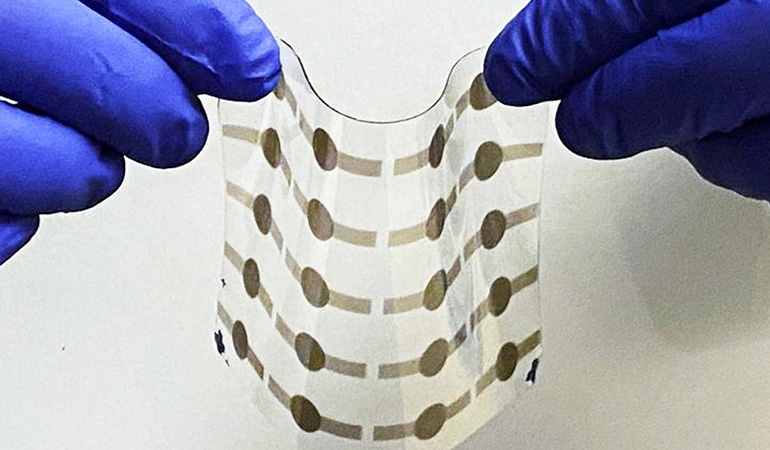Engineers at the University of California Los Angeles created artificial muscles that are stronger and more flexible than the real thing. The new material is an example of a dielectric elastomer, which is an electroactive polymer that can change its shape or size when stimulated using electricity. The researchers tweaked the crosslinking between polymer chains within the material, allowing it to be more flexible while maintaining its strength. Each film of the new material is only as thick as a human hair, but the researchers layer them up to form mini muscles. The technology could be very useful in robotic prostheses, medical soft robots, and wearable devices.
In many respects, it is difficult to mimic the complexity and sophistication of biological tissues using modern technology, but to exceed it, at least in one or two aspects, is rare and an achievement. This latest technology is an artificial muscle that can exceed the strength and flexibility of our own. “Creating an artificial muscle to enable work and detect force and touch has been one of the grand challenges of science and engineering,” said Qibing Pei, a researcher involved in the study.
Artificial muscles have a wide variety of medical applications and could allow more realistic movement for robotic prostheses and soft robotics, and even provide a mode of actuation in microfluidic devices and tissue engineering bioreactors. However, mimicking the flexibility, strength, and ability to withstand the high levels of strain of a natural muscle is a tall order.
 A jumping robot, about 1.2 centimeters in diameter, fitted with PHDE actuators
A jumping robot, about 1.2 centimeters in diameter, fitted with PHDE actuators
To achieve this, these researchers used a dielectric elastomer, which is responsive to electrical stimulation. To be specific, they used an acrylic dielectric elastomer, which traditionally can withstand high strain but suffers from poor flexibility, and requires pre-stretching before use. To address this, the researchers used a UV curing process and tweaked the crosslinking between polymer chains within the material to make it more flexible.
The resulting polymer sheets are incredibly thin, at 35 microns, but can be stacked together for use. So far, the researchers have shown that the material can generate more force than natural muscle and impressively, it demonstrates 3-10 times more flexibility.
“This flexible, versatile and efficient actuator could open the gates for artificial muscles in new generations of robots, or in sensors and wearable tech that can more accurately mimic or even improve humanlike motion and capabilities,” said Pei.
Here’s a UCLA video showing off the capabilities of the new material:
Study in journal Science: A processable, high-performance dielectric elastomer and multilayering process
Via: UCLA
